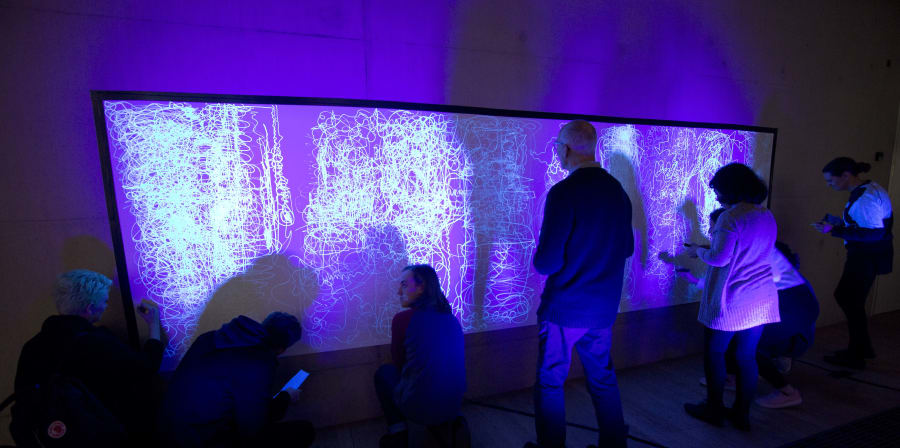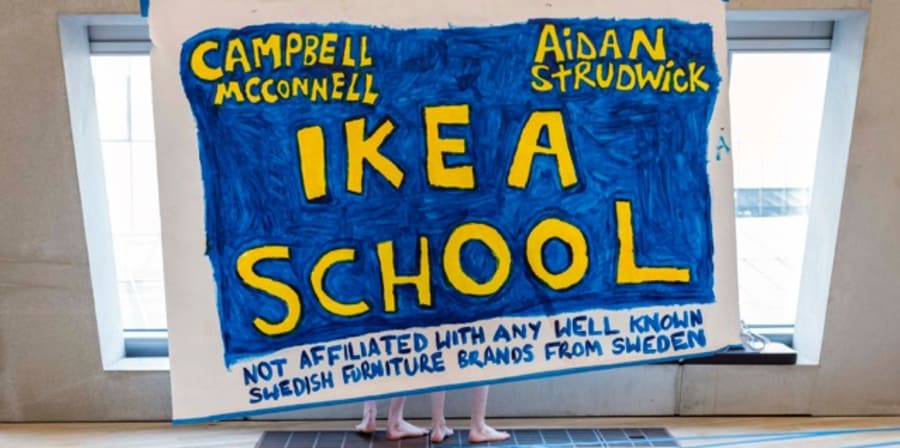
In January 2017, staff and students from the Fine Art programme at CSM took over a floor in Tate Modern's Switch House for a week to present an alternative art school open to the public. While This Is An Art School turned usual structures on their head, the week-long event was also an opportunity to highlight the current threats to art education.
Fine Art Programme Director Alex Schady launched This Is An Art School with the following impassioned statement:
"This is an open invitation to join our new temporary art school. All new students are welcome to enrol. There is to be no selection or interview process simply a requirement that you commit to action. Visitors to Tate Exchange will be invited to enrol in Art School. An art school created by students, staff and alumni of Central Saint Martins that explores what the future of arts education in the UK might look like. Visitors will have access to timetables, workshops, seminars and lectures, however, standard orthodoxies within the school will be questioned and upturned. The school will be designed, built and run in public view with opportunities for groups and visitors to engage with the project through workshops, talks, events and studio making.

While this cacophony of creativity may offer a utopian ambition for arts education there is a pressing point at its heart. We are concerned that in the current economic and political climate there is a systematic assault of arts education in the UK.
Art is increasingly isolated in the school timetable.
Creativity dismissed as peripheral and not included in the proposed Ebacc in preference to STEM subjects of maths, science and engineering. Indeed, as pupils feel pressure to study Ebacc subjects we are seeing fewer choosing to study the arts. Outside of school, cuts to local funding put galleries’ educational and outreach programmes at risk. In recreating and reconsidering an art school at Tate we want to think about what forces are currently impinging on arts education and what resistance we can offer.
We’re not saying that everybody should be an art student or artist – although, what a world that might be! – but that everyone should experience the arts. Our cultural health as a nation is promising when practitioners and the audience are diverse and vocal.
Art can be empathic, challenging and joyful. An arts education brings all these in truckloads but because such qualities can’t be scored it sits uncomfortably alongside those subjects that can. As a barometer of achievement, you can see the hoards of visitors mesmerised by a blockbuster exhibition or watch the face of a child who’s touching clay for the first time or you could think about the £84.1bn that the creative industries contribute annually to the UK economy, a sector growing at double the pace of the wider economy.
And while creativity isn’t about money, you can’t have the economy without the ecology. Bringing the art school into the Tate and inviting the public to all become art students confronts the fact that we can’t have the art without the action.